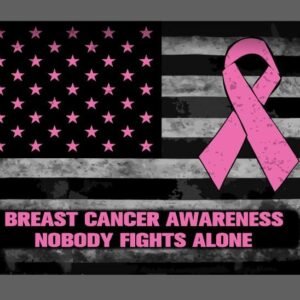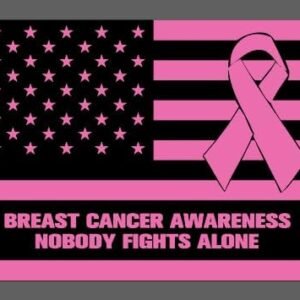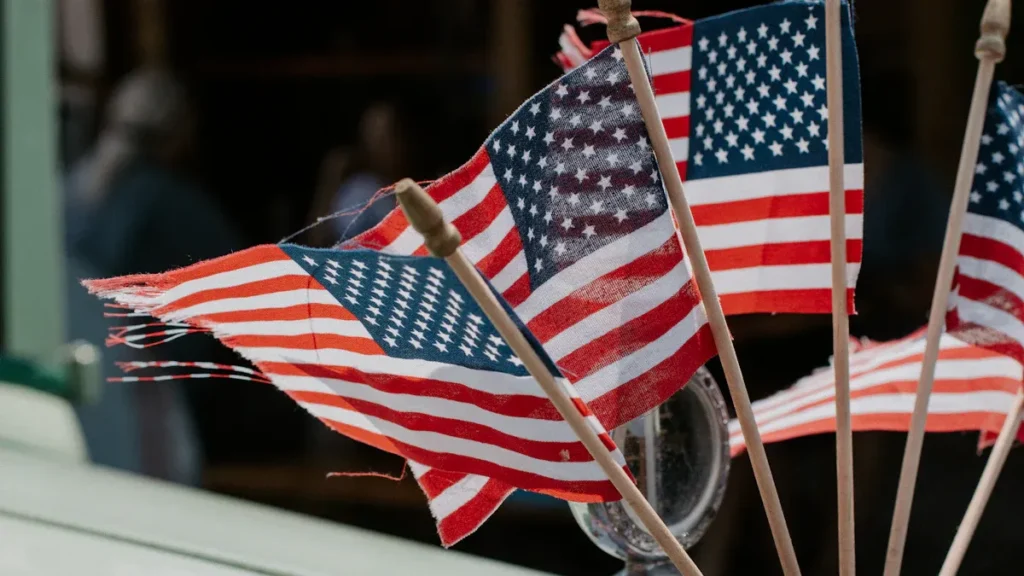Why Do Motorcyclists Love Skulls on Accessories
Table of Contents
-
Motorcycle Flag Mounts
Motorcycle 1 1/4″ Highway Engine Guard Crash Bar For Harley Sportster XL 1200 883 2004-2021
$149.99 – $259.99Price range: $149.99 through $259.99 This product has multiple variants. The options may be chosen on the product pageRated 0 out of 5 -
Motorcycle Flag Mounts
Motorcycle LED Saddlebag Lid Spoiler Kit For Harley Touring Road King Electra Glide Street Road Glide 2014-2024
$67.99Rated 0 out of 5 -
Flag Mounts & Flags
2Pack Support Breast Cancer Awareness with Stylish Harley Davidson Motorcycle Flags
$19.99Rated 0 out of 5 -
Flag Mounts & Flags
2Pack Breast Cancer Awareness Harley DavidsonMotorcycle Flag – Ride with Purpose
$19.99Rated 0 out of 5

Skulls on motorcycles have become an unmistakable emblem of biker culture. For bikers, the skull isn’t just a design; it’s a statement. It represents rebellion, a fearless embrace of mortality, and the unbreakable bond of brotherhood. You’ll often see skull-themed accessories like patches, jewelry, and seat covers, each carrying its own meaning. The skull reflects courage, toughness, and a defiance of societal norms. It’s more than an accessory—it’s a symbol of identity and unity that resonates deeply with the biker lifestyle.
Key Takeaways
Skulls symbolize rebellion and individuality in biker culture, representing a fearless approach to life and a rejection of societal norms.
The skull serves as a reminder of mortality, encouraging bikers to live boldly and embrace every moment on the road.
In motorcycle clubs, skull imagery fosters a sense of brotherhood and unity, connecting riders through shared values and experiences.
Skulls are versatile and can be incorporated into various accessories, allowing bikers to express their unique identities while staying true to the rebellious spirit.
The enduring popularity of skulls in biker fashion reflects their deep cultural significance, embodying values of freedom, resilience, and authenticity.
Skulls transcend biker culture, appearing in popular media and fashion, symbolizing rebellion and self-expression across diverse audiences.
Each skull design tells a personal story, making them more than just accessories; they are powerful symbols of identity and belonging.
The Historical Roots of Skulls on Motorcycles
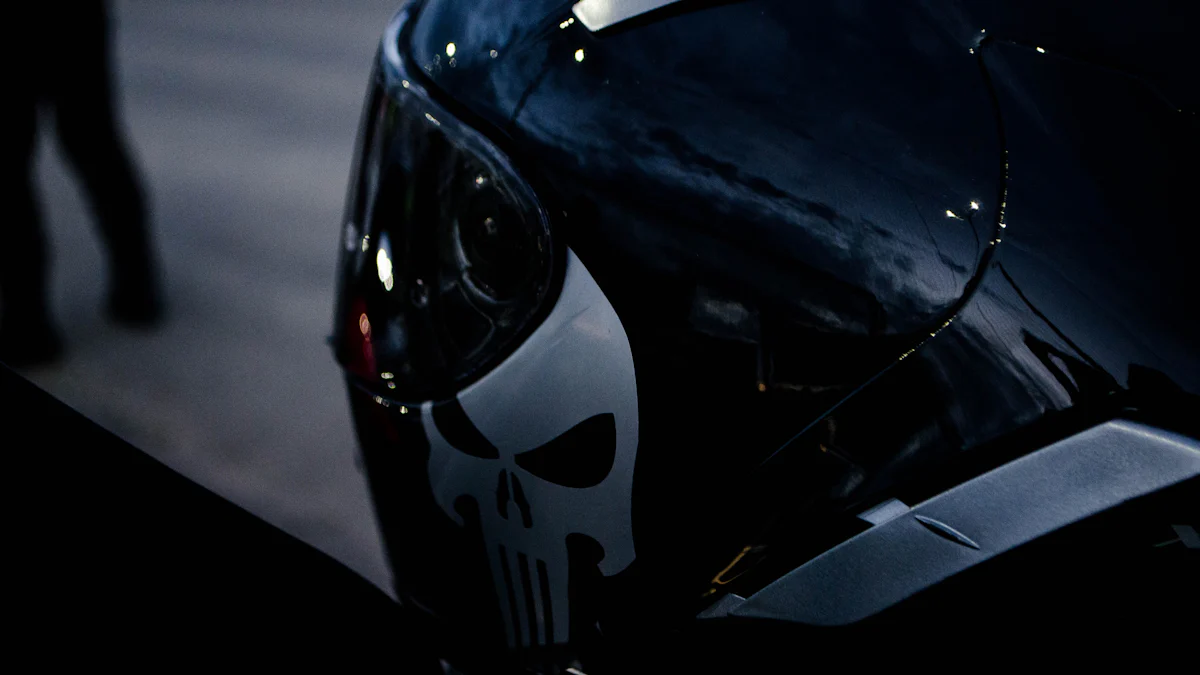
Skulls as Symbols of Rebellion in Biker Culture
Skulls have long been a powerful symbol of rebellion, and their connection to biker culture is no accident. After World War II, many veterans returned home seeking freedom and camaraderie. They found it in motorcycles. These riders, often disillusioned by societal norms, embraced a sense of rebellion that set them apart. Skulls became their emblem, representing defiance and individuality.
By the 1960s and 1970s, skulls on motorcycles had become a defining feature of biker culture. The skull wasn’t just a decoration; it was a statement. It told the world that bikers lived by their own rules, rejecting conformity. Popular media, like the iconic film Easy Rider, further cemented the skull as a symbol of rebellion. For bikers, wearing or displaying a skull wasn’t about following trends—it was about standing out and embracing a fearless identity.
The Connection Between Skulls and Mortality in Motorcycle Riding
Riding a motorcycle comes with risks, and bikers know this better than anyone. The skull serves as a stark reminder of mortality, but it’s not a symbol of fear. Instead, it’s a celebration of life and the courage to face danger head-on. When you see skulls on motorcycles, you’re looking at a reflection of the biker mindset—one that embraces the thrill of the ride while acknowledging the fragility of life.
For many bikers, the skull is also a talisman. It’s believed to bring good luck and protection on the road. This connection to mortality isn’t morbid; it’s empowering. It reminds bikers to live fully, savor every moment, and never take life for granted. The skull becomes more than an image—it’s a philosophy.
Brotherhood and Unity Through Skull Imagery
In motorcycle clubs, the skull represents more than rebellion or mortality. It’s a symbol of brotherhood and unity. When you ride with a group, you share a bond that goes beyond words. The skull imagery on patches, helmets, or accessories becomes a badge of belonging. It tells others that you’re part of something bigger—a family of riders who look out for one another.
This sense of unity is deeply rooted in biker culture. Skulls create a visual connection between members of a motorcycle club, fostering loyalty and trust. They remind bikers that, no matter the challenges, they ride together. The skull isn’t just a design; it’s a shared identity that strengthens the bonds within the community.
The Symbolic Meanings of Skulls in Biker Culture
Celebrating Life and Overcoming Fear
Skulls in biker culture carry a powerful message about life and fear. When you see a skull on a biker’s accessory, it’s not just a decoration. It’s a reminder to live boldly and embrace every moment. Riding a motorcycle comes with risks, and bikers know this better than anyone. The skull becomes a symbol of bravery, showing that you’re not afraid to face danger head-on. It’s about celebrating life, not fearing what lies ahead.
For bikers, skulls also represent resilience. They remind you to push through challenges and keep moving forward. The skull tells a story of strength and survival, encouraging you to overcome fear and live with passion. It’s not just about the ride; it’s about the mindset. When you wear or display a skull, you’re making a statement: you’re here to live fully, no matter the risks.
Equality in the Face of Death
Death is the great equalizer, and skulls in biker culture reflect this truth. No matter who you are or where you come from, everyone faces the same fate. The skull serves as a reminder of this equality. It strips away superficial differences and focuses on what truly matters. For bikers, this creates a sense of unity and connection. You’re not just part of a group; you’re part of something bigger.
When you see skull imagery in biker culture, it’s not about fear or darkness. It’s about acceptance. The skull reminds you that life is fleeting, so you should make the most of it. It’s a call to live authentically and without regret. In a way, the skull becomes a symbol of freedom. It frees you from the fear of death and encourages you to focus on what really matters—living your life to the fullest.
Spiritual and Mystical Associations in Biker Culture
Skulls also hold spiritual and mystical meanings in biker culture. They’re not just symbols of mortality; they’re symbols of transformation. For many bikers, the skull represents a journey—a transition from one phase of life to another. It’s a way to honor the past while embracing the future. The skull becomes a bridge between the physical and the spiritual, reminding you of the deeper meaning behind life’s experiences.
In some cases, skulls are seen as talismans. They’re believed to offer protection and guidance on the road. When you wear a skull ring or display a skull on your bike, it’s like carrying a piece of wisdom with you. It’s a reminder to stay grounded and focused, even in the face of uncertainty. The skull connects you to something greater, giving you strength and clarity as you navigate life’s challenges.
The Aesthetic Appeal of Skulls on Motorcycles and Accessories
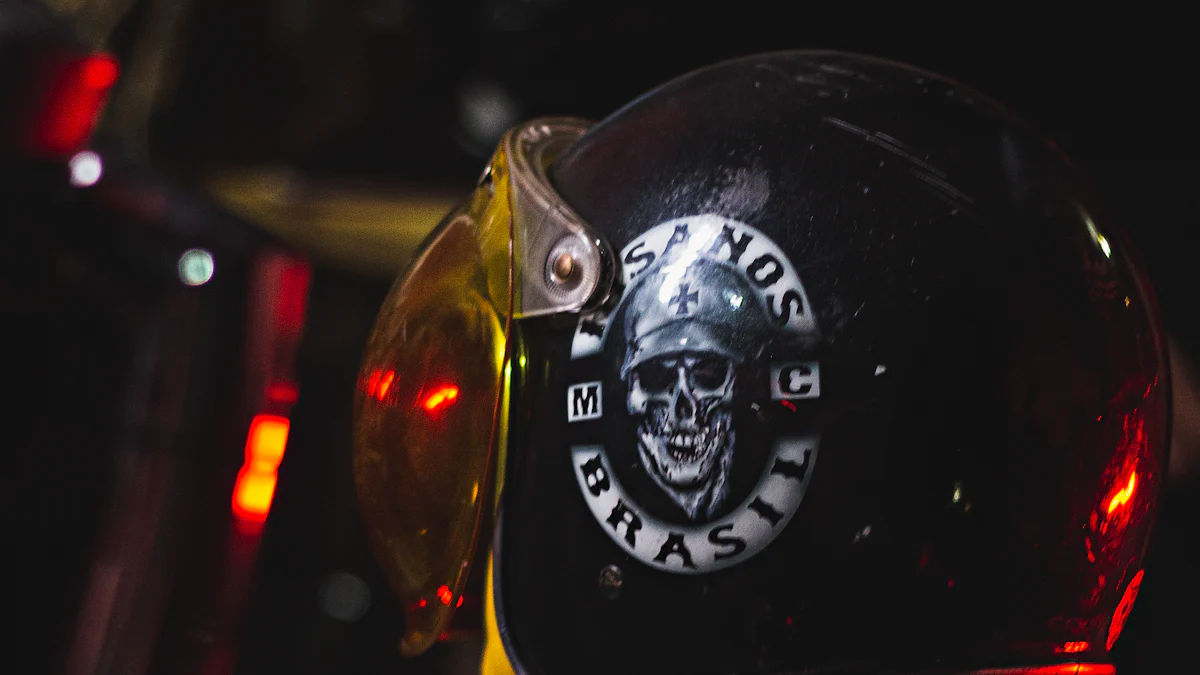
The Bold and Striking Visual Impact of Skulls
Skulls grab attention like no other design. Their sharp lines and dramatic shapes create a visual impact that’s impossible to ignore. When you see skulls on motorcycles, they immediately stand out, making a bold fashion statement. Whether it’s a skull etched onto a helmet or emblazoned on a leather jacket, the design demands recognition. It’s not just about looking tough; it’s about making sure your presence is felt.
For bikers, skull decorations amplify the rebellious spirit of the ride. They add an edge to your gear, turning ordinary accessories into symbols of defiance. The skull theme doesn’t just blend in—it dominates. It’s a way to say, “I’m here, and I’m unapologetically me.” This boldness resonates deeply in biker culture, where individuality and self-expression reign supreme.
Skulls as a Form of Self-Expression for Bikers
Every skull tells a story. For bikers, these designs go beyond aesthetics—they’re personal. A skull on your gear might represent your love for the open road, your fearless attitude, or even a tribute to a life lived fully. Skulls allow you to express who you are without saying a word. They’re more than biker decorations; they’re reflections of your identity.
The versatility of skulls makes them perfect for self-expression. You can find them in countless forms—engraved on rings, stitched onto patches, or painted on fuel tanks. Each design carries its own meaning, letting you choose what resonates with you. Whether you prefer a classic skull motif or something more intricate, there’s a design that fits your style. Skulls give you the freedom to showcase your personality while staying true to the spirit of rebellion.
The Versatility of Skull Designs in Biker Accessories
Skulls aren’t just striking—they’re incredibly adaptable. You’ll find them on everything from helmets and jackets to jewelry and seat covers. This versatility makes them a staple in biker culture. No matter your style, there’s a skull design that complements it. Whether you want something subtle or a design that screams rebellion, skull-themed accessories have you covered.
The variety of skull designs ensures there’s something for everyone. Some bikers prefer minimalist skull decorations, like a small emblem on a glove. Others go all out with elaborate skull motifs covering their motorcycles. This flexibility allows you to incorporate the skull theme into your look in a way that feels authentic. Skulls aren’t just a trend—they’re a timeless element of biker fashion that adapts to your unique taste.
Skulls as a Timeless Trend in Biker Fashion
The Enduring Popularity of Skull Accessories in Biker Culture
Skulls have become a cornerstone of biker culture, standing out as more than just a design choice. They’ve evolved into a timeless symbol that bikers proudly wear and display. Whether it’s a skull ring, a patch on a leather jacket, or a helmet adorned with skull imagery, these accessories make a bold fashion statement. They don’t just add flair to your look; they reflect the courage, toughness, and rebellious spirit that define the biker lifestyle.
What makes skull accessories so enduring is their universal appeal. They resonate with bikers across generations, from the early days of motorcycle clubs to today’s modern riders. Unlike fleeting trends, skulls have remained relevant because they embody values that never go out of style—freedom, individuality, and fearlessness. When you choose skull-themed accessories, you’re not just following a trend; you’re embracing a legacy that connects you to the roots of biker culture.
Skulls also offer versatility, making them a staple in both men’s and women’s biker fashion. For men, skulls often symbolize strength and defiance. For women, they can represent empowerment and resilience. This adaptability ensures that skull accessories continue to thrive, appealing to a wide range of bikers who want to express their unique identities. No matter how you incorporate skulls into your gear, they always make a lasting impression.
The Role of Skulls in Modern Motorcycle Gear
Today’s motorcycle gear has taken skull designs to a whole new level. From helmets to gloves, skulls have become a defining feature of modern biker accessories. They’re not just decorative; they’re functional and stylish, blending practicality with a touch of rebellion. A helmet with a skull design doesn’t just protect you—it tells the world who you are. It’s a way to stand out while staying safe on the road.
Skull-themed gear also reflects the evolution of biker fashion. As motorcycles have become more advanced, so has the gear that accompanies them. Skulls have seamlessly transitioned into this modern era, appearing on high-tech jackets, reinforced boots, and even custom bike parts. These designs combine tradition with innovation, ensuring that skulls remain a relevant and powerful symbol in the biker community.
What sets skull gear apart is its ability to make a statement without saying a word. When you wear a jacket with a bold skull motif or ride a bike with skull accents, you’re showcasing your personality and values. You’re telling others that you embrace the risks and rewards of the biker lifestyle. Skulls turn ordinary gear into something extraordinary, giving you a way to express yourself while staying true to the spirit of rebellion.
The Personal Connection Between Bikers and Skulls
Skulls as a Reflection of the Biker Lifestyle
The skull isn’t just a design; it’s a mirror reflecting the core of the biker lifestyle. When you ride, you embrace freedom, risk, and individuality. The skull captures all of that in one powerful image. It symbolizes your fearless approach to life and your willingness to face challenges head-on. For bikers, the skull becomes a badge of honor, representing the courage it takes to live life on your own terms.
The connection between bikers and skulls dates back to the post-World War II era. Veterans returning home found solace in motorcycles, forming clubs that celebrated camaraderie and rebellion. They adopted the skull as a symbol of their defiance and survival. Over time, this imagery became deeply ingrained in biker culture. Today, when you wear a skull ring or display a skull on your bike, you’re not just making a fashion statement. You’re honoring a legacy of resilience and independence.
The skull also reflects the transient nature of life, a reality every biker understands. Riding a motorcycle means embracing the thrill of the open road while acknowledging its risks. The skull reminds you to live boldly, savor every moment, and never take life for granted. It’s not just an accessory; it’s a philosophy that aligns perfectly with the biker lifestyle.
Stories Behind the Skulls in Biker Culture
Every skull in biker culture tells a story. For some, it’s a tribute to a fallen friend or a reminder of a life-changing journey. For others, it’s a symbol of personal growth or a marker of milestones. These stories give skull imagery a deeply personal meaning, turning it into more than just a design. When you see a skull on a biker’s gear, you’re looking at a piece of their history.
The origins of skull imagery in biker culture are rooted in the experiences of early motorcycle clubs. Many of these clubs were formed by veterans who carried the weight of their military past. They adorned their bikes and gear with skulls, drawing inspiration from emblems used in their units. The skull became a way to honor their service while embracing their new identity as bikers. This tradition continues today, with skulls serving as a bridge between the past and the present.
Some bikers choose skull designs that reflect their personal values or beliefs. A minimalist skull might represent simplicity and focus, while an intricate design could symbolize complexity and depth. Others use skulls to commemorate significant events, like surviving a dangerous ride or overcoming a major challenge. These stories add layers of meaning to the skull, making it a unique expression of individuality.
The skull’s versatility allows it to resonate with bikers from all walks of life. Whether you see it as a symbol of rebellion, a reminder of mortality, or a celebration of life, the skull connects you to a larger community. It’s a shared language that unites bikers while allowing each person to tell their own story.
The Influence of Skulls Beyond the Biker Community
Skulls in Popular Culture and Media
Skulls have made their mark far beyond the world of bikers. You’ve probably noticed them in movies, music, and even video games. They’ve become a universal symbol of rebellion and individuality. Think about iconic bands like The Misfits or Motörhead. Their use of skull imagery on album covers and merchandise turned the motif into a cultural phenomenon. These designs didn’t just appeal to fans of punk or heavy metal—they resonated with anyone who valued nonconformity.
In movies, skulls often represent danger, mystery, or power. From pirate flags in adventure films to the menacing logos of villains, skulls grab your attention and set the tone. Video games have also embraced this imagery. Whether it’s a character’s emblem or part of a game’s aesthetic, skulls add an edge that players love. This widespread use shows how versatile the symbol is. It can mean different things depending on the context, but it always leaves a strong impression.
Fashion has also played a huge role in popularizing skulls. Since the 1970s, designers have incorporated them into clothing and accessories. What started as a symbol for subcultures like punk and goth has now entered mainstream fashion. Today, you’ll find skulls on everything from high-end designer pieces to casual streetwear. They’ve become a way for people to express their individuality, no matter their style.
“The skull symbol has transcended subcultures and found its place in mainstream fashion, representing rebellion and anti-establishment ideals.”
This quote highlights how skulls have evolved. They’re no longer confined to specific groups. Instead, they’ve become a universal emblem that speaks to anyone who values self-expression.
The Broader Symbolism of Skulls in Society
Skulls carry meanings that go beyond their visual appeal. They’ve become symbols of life, death, and transformation. In many cultures, skulls remind you of mortality. But instead of being grim, they encourage you to live fully and embrace change. This duality makes them powerful and relatable.
Artists have also explored the deeper meanings of skulls. Contemporary art often uses them to challenge perceptions and spark conversations. For example, some artists use skulls to comment on consumerism or the fleeting nature of life. These works resonate because they tap into universal themes. When you see a skull in art, it’s not just a decoration—it’s a statement.
In society, skulls have become symbols of resilience and strength. They appear in tattoos, jewelry, and even home décor. People use them to tell their stories or reflect their values. A skull might represent overcoming a tough time or embracing a fearless attitude. Whatever the reason, the symbol connects with people on a personal level.
The influence of skulls shows no signs of fading. They’ve moved from biker culture to pop culture, fashion, and beyond. Their ability to adapt and resonate with different audiences ensures they’ll remain relevant for years to come.
Why Skulls on Motorcycles Continue to Resonate
The Emotional and Cultural Significance of Skulls
Skulls on motorcycles hold a unique place in biker culture. They’re not just designs; they’re symbols that speak to the heart of what it means to ride. For bikers, the skull represents more than danger or death. It’s a reminder of life’s fragility and the importance of living boldly. When you see a skull on a biker’s gear, you’re looking at a declaration of courage and resilience. It’s a way of saying, “I’m here to live fully, no matter the risks.”
The emotional connection bikers have with skulls runs deep. These symbols reflect the rebellious spirit that defines the biker lifestyle. Riding a motorcycle isn’t just about transportation—it’s about freedom, individuality, and breaking away from societal norms. Skulls amplify this message, making them an integral part of biker identity. They remind you to embrace the open road, face challenges head-on, and savor every moment.
Culturally, skulls have become timeless icons within the biker community. Their popularity surged after World War II, as returning veterans sought a way to express their newfound sense of independence. Over time, skull symbolism evolved, representing not just rebellion but also unity and strength. Today, skulls continue to resonate because they embody values that never fade—freedom, resilience, and the pursuit of a life without limits.
“Skulls carry a positive meaning for bikers, not just death and peril. They symbolize more than danger and death, representing a positive aspect in biker culture.”
This quote captures the essence of why skulls remain so powerful. They’re not about fear; they’re about empowerment. When you wear or display a skull, you’re connecting with a legacy that celebrates life, individuality, and the unbreakable bonds of the biker community.
The Role of Skulls in Defining Biker Identity
For bikers, the skull is more than a design—it’s a badge of honor. It reflects the core values of the biker lifestyle: freedom, rebellion, and authenticity. When you see skulls on motorcycles or biker gear, you’re witnessing a visual representation of what it means to ride. The skull becomes a symbol of who you are and what you stand for.
Skulls have become an integral part of biker identity because they resonate on a personal level. They tell a story of resilience and individuality. Whether it’s a skull ring, a patch on a jacket, or a custom design on a bike, each piece carries its own meaning. For some, it’s a tribute to a fallen friend. For others, it’s a reminder of a life-changing journey. These personal connections make skulls more than accessories—they’re symbols of identity and belonging.
The rebellious nature of skulls also plays a key role in defining biker culture. Riding a motorcycle is an act of defiance against conformity. It’s about carving your own path and living life on your terms. Skulls amplify this message, making them a perfect fit for the biker lifestyle. They remind you to stay true to yourself, embrace your individuality, and never back down from a challenge.
Skulls also unite bikers across generations. From the early days of motorcycle clubs to today’s modern riders, skulls have remained a constant. They connect you to a larger community, creating a sense of belonging while allowing you to express your unique identity. This balance between individuality and unity is what makes skulls such a powerful symbol in biker culture.
In the end, skulls on motorcycles continue to resonate because they capture the essence of what it means to ride. They’re not just designs; they’re statements. They remind you to live boldly, embrace your freedom, and stay true to who you are. Whether you’re a seasoned rider or new to the road, the skull is a symbol that speaks to the heart of the biker experience.
Skulls on motorcycles are more than just designs; they’re symbols that define the essence of biker culture. They represent rebellion, mortality, and the unbreakable bonds of brotherhood. For bikers, the skull is a reminder to live boldly, embrace individuality, and face life’s challenges with courage. These symbols carry deep meanings, from celebrating life to accepting equality in death. Their bold aesthetic and timeless appeal make them a cornerstone of biker identity. Skulls continue to resonate because they embody freedom, resilience, and the spirit of living life on your own terms.
FAQ
Why do bikers love skulls so much?
Skulls resonate deeply with bikers because they symbolize freedom, rebellion, and the courage to face life’s risks. Riding a motorcycle comes with its dangers, and the skull serves as a reminder to live boldly and embrace every moment. It’s not just about the thrill of the ride—it’s about the mindset of living life on your terms.
Are skulls only for men in biker culture?
Not at all! Skulls are for everyone. Women in biker culture often incorporate skulls into their accessories in creative and stylish ways. You’ll find skull earrings, necklaces, and bracelets with delicate designs that add a refined touch. These pieces allow women to express their individuality while staying true to the rebellious spirit of biker culture.
How can men add skulls to their style without overdoing it?
Men can easily incorporate skulls into their wardrobe through subtle accessories. Skull rings, bracelets, and pendants are popular choices. These items add a bold yet understated edge to any outfit. Whether you’re wearing a leather jacket or a casual T-shirt, a skull accessory can elevate your look without feeling over the top.
Do skulls have a deeper meaning beyond fashion?
Absolutely. Skulls carry profound symbolism in biker culture and beyond. They represent mortality, resilience, and transformation. For bikers, a skull isn’t just a design—it’s a philosophy. It reminds you to embrace life fully, face challenges head-on, and stay true to yourself. Skulls also symbolize unity and equality, as death is the ultimate equalizer.
Why are skulls so popular in fashion outside of biker culture?
Skulls have transcended biker culture and become a universal symbol of individuality and rebellion. You’ll see them on everything from T-shirts and hoodies to jewelry and high-end fashion. Their bold aesthetic and connection to themes like life, death, and transformation make them appealing to a wide audience. Skulls let people express their unique style while making a statement.
Are skull-themed accessories a timeless trend?
Yes, skulls have proven to be a timeless trend. They’ve been a staple in biker culture for decades and continue to evolve in modern fashion. Their versatility allows them to adapt to different styles, from edgy and bold to subtle and elegant. Whether you’re a biker or a fashion enthusiast, skulls remain a powerful way to showcase your personality.
What makes skulls so versatile in design?
Skulls work well in countless forms, from minimalist emblems to intricate, artistic designs. This versatility makes them perfect for a variety of accessories, including helmets, rings, jackets, and even bike parts. Whether you prefer a simple skull motif or something more elaborate, there’s a design that fits your style and tells your story.
Do skulls have spiritual significance in biker culture?
Yes, many bikers see skulls as more than just symbols of mortality. They represent transformation and the journey of life. Some view skulls as talismans that offer protection and guidance on the road. Wearing or displaying a skull can feel like carrying a piece of wisdom, reminding you to stay grounded and focused, even in uncertain times.
Can skulls symbolize positivity?
Definitely. While skulls are often associated with death, they also symbolize life and resilience. For bikers, they’re a reminder to overcome fear, celebrate the present, and live authentically. Skulls encourage you to embrace challenges and savor every moment, making them a symbol of empowerment rather than darkness.
Why do skulls create such a strong sense of identity for bikers?
Skulls reflect the core values of the biker lifestyle—freedom, individuality, and defiance. They connect bikers to a legacy of rebellion and resilience while allowing each rider to express their unique story. Whether it’s through a patch, a ring, or a custom bike design, skulls become a badge of honor that unites bikers while celebrating their personal journeys.



